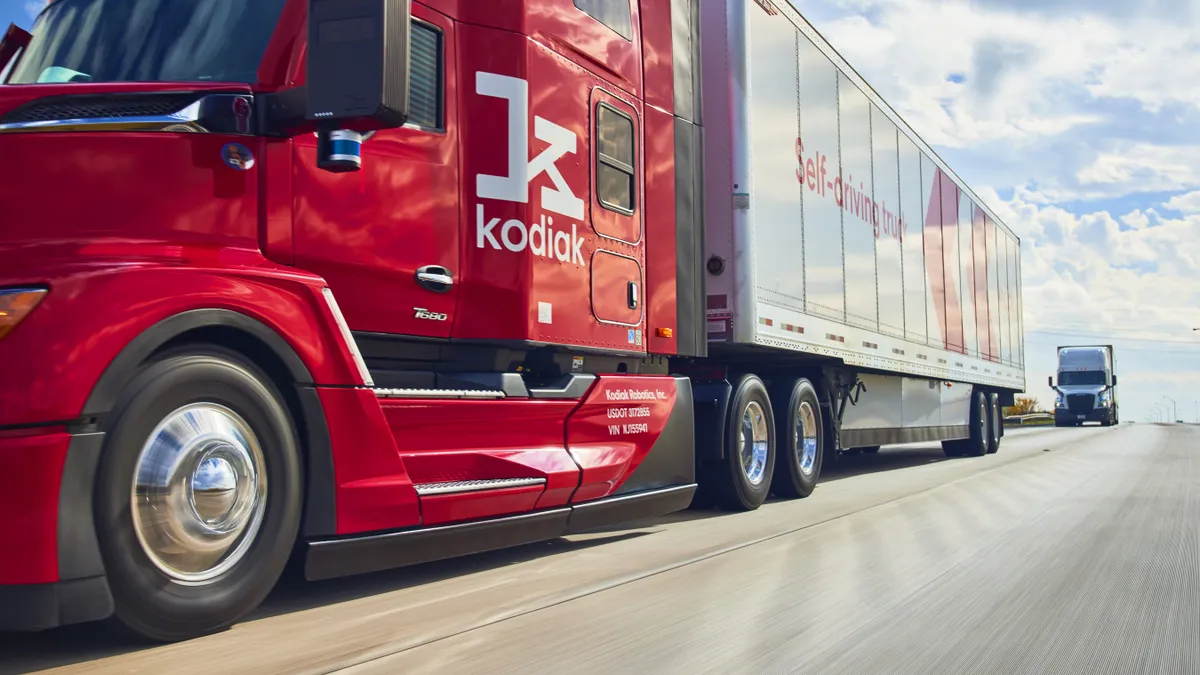This is an opinion piece by Vikas Shetty, client partner at Capgemini North America. Views do not necessarily reflect those of Transport Dive.
The trucking industry, prompted by the pandemic, quickly adopted a shift toward digitized transactions. In an effort to reduce contact, drivers needed to be equipped to digitally track the areas they were traveling to, determining if they were experiencing high infection rates.
Organizations across the industry worked to implement e-signatures, with copies sent to customers and then returned, to avoid the face-to-face contact that typically occurred when a delivery was being completed.
Most of all, the large fluctuations in freight demand and major resource challenges created by the pandemic exposed a serious need for improved operational efficiency — improvements that could be solved with new investments in technology.
To combat these resource challenges and respond to future demand fluctuations, the trucking and logistics industry must rapidly accelerate its adoption of artificial intelligence. It's an area within the industry where there has historically been slow adoption, as organizations were often unable to justify the commitment or prove clear return on investment potential.
There are also significant skill challenges with deploying AI, when the right staff to implement and scale the capabilities is not put in place. Our research shows just 13% of companies have successfully scaled their AI programs.
The need for AI investment was also not as prevalent prior to the pandemic, but now, trucking and logistics companies are realizing that they may not be able to operate within their previously limited capabilities.
As the industry enters the age of AI, here are three key areas where the technology will greatly accelerate the efficiency of the trucking and freight industry:
Freight billing
Traditional optical character recognition has been helpful in billing. But combined with AI, the value could be doubled.
Within trucking and logistics, there is a lot of manual effort currently being spent by billing teams to capture billing-related data. This manual process creates more opportunities for errors, which in turn leads to potential losses and impacts to the business.
With the combination of optical character recognition and AI — or even with AI alone — bills can be processed at a higher level of accuracy in a faster way. Companies can more efficiently allocate their resources and people for higher value projects, while accomplishing more in a shorter amount of time.
This reduction in errors and increase in speed to complete tasks would also improve the customer experience.
Route optimization
At the start of the pandemic, shipments were changing, volume was adjusting and routes were adapting. With the help of AI, trucking and logistics companies can leverage their data to determine the most efficient sequence of routes for transporting supplies.
Drivers could reach more clients faster along a more efficient journey, reducing their waiting and idling times, and improving their overall productivity. In addition, customers can be prioritized based on need and would receive more shipments and deliveries on time, with minimized delays.
Having AI for route optimization provides trucking and logistics the visibility it needs to pivot quickly to meet demand and productively support the changing requests in the market.
Market growth
Capitalizing on opportunities for revenue growth is never more important than during an economic downturn. With the help of AI, sales teams can generate intelligence on the most relevant potential clients, improve their output, and secure more business.
Leveraging the additional data generated through AI, companies can also more effectively showcase their value and differentiation compared to competitors. Without AI, trucking and logistics organizations can’t leverage data to its full potential, reducing their visibility into prospective customers who may be an ideal fit for their business.
Change is inevitable
The pandemic was the ultimate proof point that change is inevitable. As a result, the adoption rate for AI in trucking and logistics is likely to be much faster than expected.
Companies that deploy AI will have the ability to improve processes and efficiency while reducing costs, and those who take the steps to invest in, deploy, and scale this technology will see these benefits both in the short term and long term.
To submit an opinion piece for publication on the Transport Dive website, please visit https://www.transportdive.com/opinion/submit-opinion/ and view our guidelines and submission form.




















